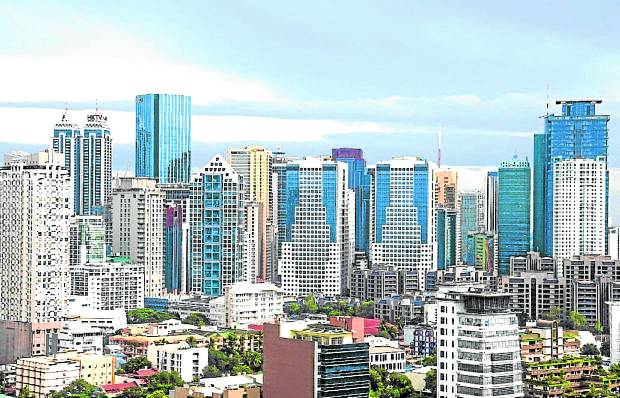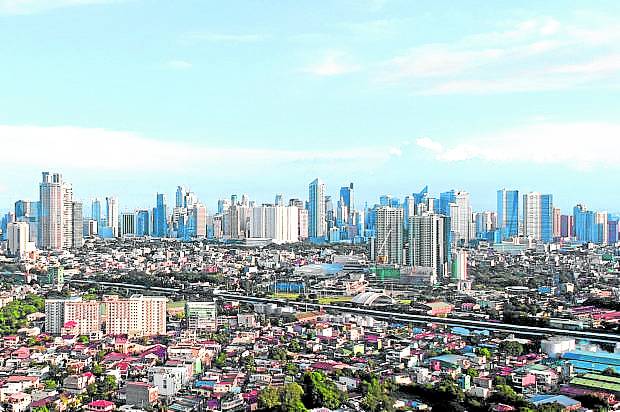Bound for rebound: Property stakeholders anticipate recovery in 2022
The Philippine property market is poised for a rebound in 2022. The improving vaccination rate complemented by rising consumer and business confidence should inject a much-needed boost to the sector. We encourage stakeholders to remain proactive to capture gains in 2022.
Office developers should continue lining up projects while tenants should prepare for a return to office and look at the viability of opening office in core locations. Residential developers should also launch new projects in anticipation of pent-up demand, while mall operators should be mindful of sizes of new retail outlets to open in the next 12 to 24 months given Filipinos’ rising propensity to shop online.
Office: The great return
In our view, any rebound in office leasing will be supported by a successful COVID-19 inoculation program. The Philippine government projects about 50 million Filipinos will be fully vaccinated by the end 2021.
Despite the implementation of work-from-home (WFH) arrangements, some firms, including outsourcing companies, continue to look for office space across the country. We see these leasing queries materializing over the next 12 months which would anchor a recovery in office space take-up within and outside Metro Manila.
In the first nine months, Colliers recorded 302,600 sqm of office deals, up a decent 2 percent from the 295,800 sqm recorded in the same period last year. Traditional occupiers covered 61 percent of the total transactions during the period followed by outsourcing firms.
Article continues after this advertisementColliers, however, retains its vacancy forecast of 15.6 percent for 2021. A potential rebound in office space absorption is seen in 2022 with the improvement in business sentiment in the next 12 months complemented by greater vaccination rates.
Article continues after this advertisementGreen edge: Future-proofing office demand
Colliers also sees more landlords and occupiers embracing the healthy and sustainable route to office development and leasing.
We believe that the adoption of sustainable office spaces plays a crucial role in future-proofing office towers beyond 2022. There will likely be a heightened preference for sustainable buildings that provide natural lighting and optimize air quality, among other features. Over the next three to five years, these features should result in utility and talent acquisition cost savings and contribute to a healthier and more productive workforce.
From 2021 to 2023, about 40 percent of the new supply will be Leadership in Energy and Environmental Design (LEED) or WELL-certified buildings. Most of the buildings due to be completed will offer lower density ratios, curtain wall systems with thermal insulation, touchless access in elevators, vertical gardens, UV disinfection lifts and filtered air circulation systems to ensure a healthy and efficient workplace for traditional and outsourcing occupiers.
Colliers also sees continued space absorption outside Metro Manila. As of end September, provincial transactions accounted for 22 percent of total transactions in the Philippines, with Cebu leading at 26,000 sqm, followed by Iloilo.
Colliers meanwhile projects further correction particularly in submarkets with substantial space vacated due to lease terminations and significant amount of upcoming supply. In 2021, we see rents dropping by 20 percent before a gradual recovery starting second half of 2022.
Ortigas Center and the Bay Area continue to be attractive office hubs in Metro Manila, covering 45 percent of total transactions in the capital region. In our view, the availability of options in prime locations and attractive rents should enable tenants to move from non-core to core locations including major business districts.
Residential: Rise of the north
In the next 12 to 36 months, we see the completion of major infrastructure projects such as the NLEx-SLEx Connector, North-South Commuter Railway and the Central Luzon Link Expressway (CLLEX) likely benefitting key provinces in North and Central Luzon including Pampanga and Bulacan. These will be complemented by the completion of Bulacan International Airport and expansion of Clark International Airport.
Aside from improving connectivity, these infrastructure projects should also raise land values. Among the ongoing township developments north of the capital are Rockwell’s Nepo Center in Angeles, Pampanga, which will feature mid-rise residential condominiums and a Power Plant Mall; and Megaworld’s Northwin Global City in Marilao, Bulacan, which will feature high-rise residential condominiums, shophouses, office buildings, hotels, schools and malls.
The rise in residents’ purchasing power in key provinces such as Cavite, Laguna, Bulacan and Pampanga encouraged developers to build malls and recreational facilities alongside office, residential condominium buildings and institutional facilities such as schools and hospitals. These are also seen to satisfy the millennials’ demand for greater mobility and convenience.
Residential demand should also be anchored by the growth in overseas Filipino worker (OFW) remittances. Data from the Bangko Sentral ng Pilipinas (BSP) showed that cash remittances in September 2021 reached $2.7 billion, up 5.2 percent year on year.
Retail: Revenge shopping, dining
The Department of Trade and Industry (DTI) projects the number of domestic online businesses to reach 750,000 in 2021 before rising to about 1 million in 2022. In our view, the Filipinos’ growing propensity to shop online is among the top factors that will likely influence physical mall space absorption beyond 2022. Colliers recommends that retailers expand their e-commerce presence and maximize technological advantages. We have seen retailers complementing their physical stores with online platforms. For instance, Ikea, which recently opened its five-story shop in Pasay City, also launched alongside a 24/7 online store. Brick-and-mortar stores should also be proactive in partnering with mobile wallet apps for ease of payment, especially for older customers.
Over the next 12 to 24 months, we encourage mall operators to be cautious of new supply. Colliers observed that developers have been cautious in completing new malls and this was evident in 2020 when only 53,100 sqm of new space was completed. This is significantly lower than the annual average of about 323,200 sqm of new supply from 2017 to 2019.
Colliers recommends that mall operators be flexible with their space usage by maximizing their space for opening pop-up stores, utilizing available facilities such as activity centers for vaccination drives as well as introducing alternative dining options (e.g. park and dine, and al fresco dining).
Meanwhile, we also expect rents to recover slowly starting 2022 with the improved vaccination program and a government-projected economic recovery spurring an increase in consumer spending.
Leisure: Local tourism to stoke hotel demand
Colliers believes that recovery in the leisure sector will likely be anchored by local tourism. The Department of Tourism (DOT) said it was expecting domestic trips to reach 84.8 million in 2022, while foreign arrivals are projected to reach between 2 million and 5 million for the same year.
Colliers is likewise optimistic that revenge travel among local tourists should help increase occupancies of selected hotels across the country. In 2021, about 1,027 rooms are likely to be delivered with the Bay Area accounting for about 81 percent of the new supply. Colliers believes that the delivery of new hotel rooms is likely to remain tepid up to 2022 before gradually rebounding in 2023.
Colliers also projects average daily rates (ADRs) to decline by 10 percent in 2021 before a slow recovery starting 2023 on the back of improved foreign and domestic visitors.
Industrial: E-commerce to sustain demand
Colliers believes that the growth of industrial sector beyond 2021 will likely be driven by sustained demand in e-commerce, logistics and manufacturing.
In the first half of 2021, industrial vacancy in the Cavite-Laguna-Batangas (Calaba) corridor slid marginally to 5.6 percent from 5.7 percent in the second half of 2020. This can be attributed to the increased demand for warehouse and storage space among e-commerce and FMCG (fast-moving consumer goods) firms as online shopping continues to grow in the country. A survey conducted by NielsenIQ showed that 67 percent of Filipinos are likely to continue online shopping even post-COVID-19.
We also see the rising demand for cold storage facilities sustaining demand for industrial assets in the next 12 to 36 months. The Board of Investments (BOI) projects the revenue of the country’s cold chain industry to reach P20 billion by 2023.
Cold storage facilities are likely to expand in areas outside Metro Manila, anchored on the growth of grocery and perishable food item deliveries. To meet the growing demand, we encourage developers to consider expanding their industrial portfolio to include cold chain facilities or refurbish existing supply by incorporating specialized cold storage features.
The recently enacted Corporate Recovery and Tax Incentives for Enterprises Act (CREATE) law should also help attract more investments into the country through reduced corporate income taxes. Industries involved in the manufacturing of medical equipment and supplies, export products, and electronic components and semiconductors are among the sectors likely to enjoy these tax incentives.
Colliers observed a year on year increase by 1.9 percent and 0.9 percent in land leasehold and warehouses lease rates respectively in the first half. We project an annual average growth of 2.2 percent for land leaseholds and 2 percent for warehouse lease rates from 2021 to 2025.
Colliers expects prices to remain competitive as logistics firms and warehouse developers explore the construction of new warehouses and upgrading of existing assets in the next 12 to 24 months.

